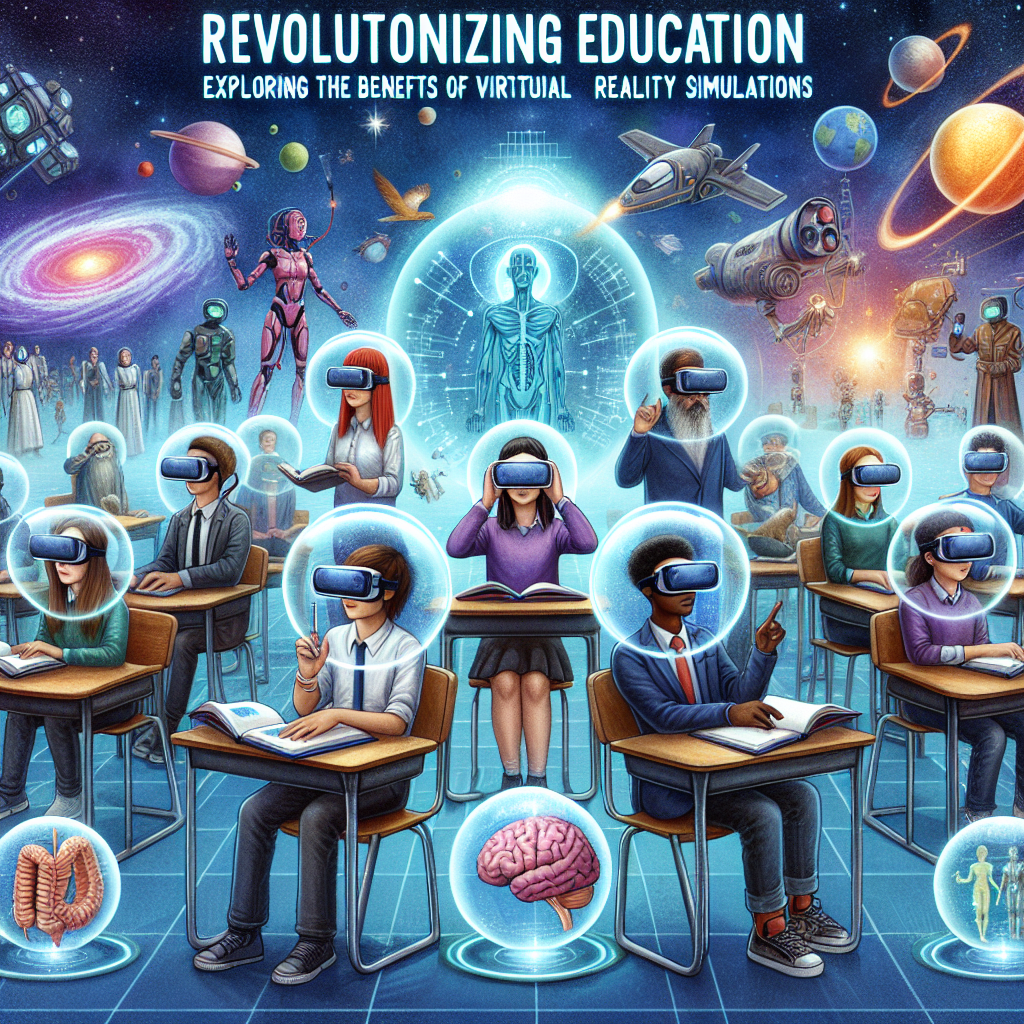Revolutionizing Education: Exploring the Benefits of Virtual Reality Simulations
Virtual Reality (VR) technology has been booming in recent years, with applications across various industries from gaming to healthcare. However, one area that is perhaps the most promising for VR is in education. Virtual reality simulations have the potential to transform the way students learn and interact with educational material, providing a more immersive and engaging experience.
In this article, we will explore the benefits of virtual reality simulations in education and how they are revolutionizing the way we teach and learn.
Enhanced Engagement and Immersion
One of the most significant advantages of virtual reality simulations in education is the enhanced engagement and immersion they provide. Traditional learning methods can often be dull and uninspiring for students, leading to disinterest and apathy towards the subject matter. By using VR simulations, educators can create interactive and immersive environments that grab students’ attention and hold it.
With VR, students can explore virtual worlds, conduct experiments, dissect virtual animals, and interact with historical figures as if they were right there with them. This level of immersion can help students retain information better and make learning more enjoyable and memorable.
Real-World Application
Another key benefit of virtual reality simulations in education is their ability to simulate real-world scenarios and applications. For example, medical students can practice surgical procedures in a safe and controlled environment, allowing them to make mistakes and learn from them without risking the life of a real patient. Similarly, engineering students can test their designs and troubleshoot problems in a virtual setting before moving onto physical prototypes.
By providing students with hands-on experience in a virtual environment, educators can better prepare them for the challenges they will face in their future careers. This practical, real-world application of knowledge is invaluable and can give students a competitive edge in the job market.
Accessibility and Inclusivity
Virtual reality simulations also offer a level of accessibility and inclusivity that traditional learning methods cannot match. Students with disabilities or those who may have difficulty attending physical classes can still engage with educational material through VR. For example, visually impaired students can use VR simulations to explore and interact with 3D models of objects, while students with mobility issues can participate in virtual experiments and activities.
Additionally, virtual reality simulations can provide a more inclusive learning environment for students from diverse backgrounds. By presenting information in a visual and interactive format, VR can cater to different learning styles and preferences, making education more accessible and engaging for all students.
Cost-Effectiveness and Flexibility
While implementing virtual reality technology in education may require an initial investment, it can ultimately prove to be cost-effective in the long run. VR simulations can reduce the need for physical materials, equipment, and resources, saving schools and institutions money in the long term. Furthermore, virtual reality can be used to supplement traditional teaching methods, allowing educators to reach a larger audience and provide additional resources and support to students.
Additionally, virtual reality simulations offer flexibility and scalability that traditional teaching methods lack. Educators can create and deliver content quickly and easily, making it easier to adapt to different learning needs and preferences. Whether it’s creating a simulation for a specific lesson or providing additional resources for students to explore independently, virtual reality can cater to a wide range of educational needs and requirements.
FAQs
Q: Is virtual reality technology suitable for all age groups?
A: While virtual reality technology can be used by individuals of all ages, it is essential to consider the age-appropriateness of the content. Educators should select VR simulations that are suitable for the age group they are teaching and ensure that the content is engaging and educational.
Q: How can virtual reality simulations be integrated into the classroom?
A: Virtual reality simulations can be integrated into the classroom in various ways, such as through standalone VR headsets, mobile devices, or desktop computers. Educators can use VR simulations as part of their lesson plans, group activities, or independent study sessions to enhance the learning experience.
Q: Are there any potential drawbacks to using virtual reality simulations in education?
A: While virtual reality simulations offer numerous benefits, there are potential drawbacks to consider, such as the initial cost of equipment and software, technical issues, and concerns about data privacy and security. Educators should carefully evaluate these factors before implementing VR technology in the classroom.
Q: What impact can virtual reality simulations have on student learning outcomes?
A: Virtual reality simulations have the potential to improve student learning outcomes by enhancing engagement, retention, and practical application of knowledge. By providing students with a more immersive and interactive learning experience, VR can help them develop critical thinking skills, problem-solving abilities, and real-world applications of knowledge.
In conclusion, virtual reality simulations have the potential to revolutionize education by providing a more engaging, interactive, and practical learning experience for students. By leveraging VR technology in the classroom, educators can enhance student engagement, improve learning outcomes, and create a more inclusive and accessible educational environment. As virtual reality technology continues to advance, its impact on education is likely to grow, offering new possibilities for teaching and learning in the future.
